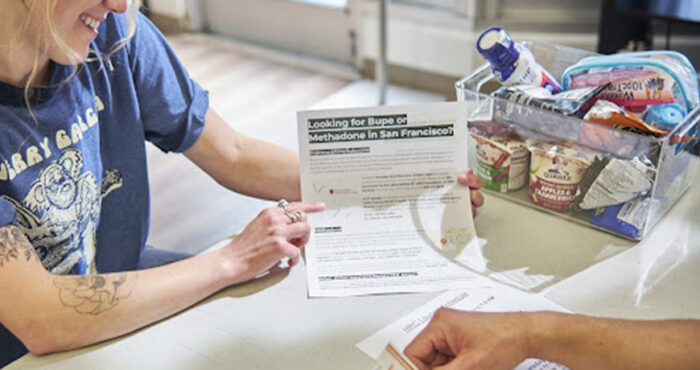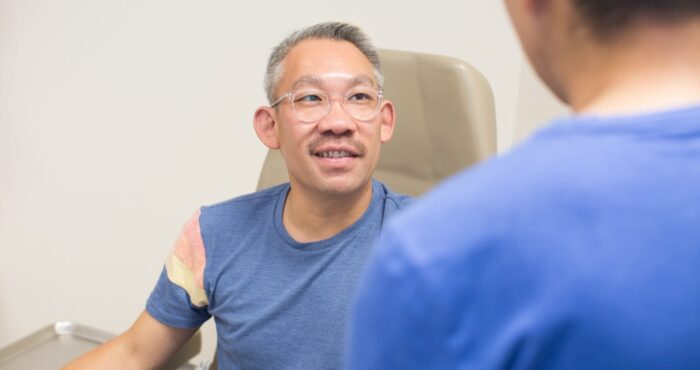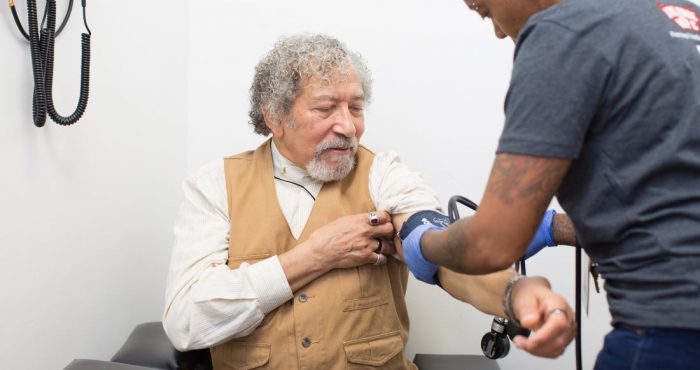Here’s what you need to know about HIV drug resistance
If you’re living with HIV, you’ve likely heard about HIV drug resistance. Maybe your HIV provider has even talked to you about HIV drug resistance testing. But what is drug resistance? How common is it, should you be worried about it, and more importantly—what can you do to prevent it?
HIV drug resistance is a problem because it means that the type of HIV you have is “resistant” to, or isn’t affected by, a particular type of HIV medication. Drug resistance can limit the treatment options that will work for a person.
In this article, we provide a low-down on HIV drug resistance, including what it is and how you get tested for it. We also have advice from HIV clinicians on prevention and what to do if you do develop HIV drug resistance.
What is HIV drug resistance?
HIV medications work by preventing the virus from replicating (making copies of itself). When a particular strain of HIV is able to make copies of itself, even in the presence of a particular antiretroviral, we say that it is “drug resistant.”
HIV drug resistance isn’t a blanket condition. People living with HIV may have one or more drug-resistant mutations that make them less sensitive to one or more antiretrovirals. For example, if people have protease mutations, their HIV is resistant to protease inhibitors, meaning that a drug like darunavir (Prezista), a protease inhibitor, may not work for them. People with reverse transcriptase mutations may be resistant to a drug like emtricitabine/TDF (Truvada), a nucleoside reverse transcriptase inhibitor.
Because antiretrovirals in the same “class” (for instance two different types of NNRTIs) prevent HIV from replicating in the same way, if the virus becomes resistant to one drug within that class, it can become partially- or fully-resistant to all drugs within that class. For example, a person that develops HIV drug resistance to Prezista may also be resistant to atazanavir (Reyataz), because they are both protease inhibitors.
How bad is drug resistance? Is it something I should worry about?
“Mostly no major harm is done if someone develops or even acquires drug resistant HIV. Usually there are other meds that will work,” said David Alain Wohl, MD, a professor in the Division of Infectious Diseases at the University of North Carolina at Chapel Hill. “But with more resistance comes fewer second chances and less flexibility. That means we may have to use drugs that are harder to take or have more side effects. In rare but not unheard-of cases, people run out of options.”
Fortunately, newer HIV medications are less likely to produce drug resistance mutations than older HIV medications.
“Today’s HIV treatments work, really well. Once common, HIV drug resistance has become a quite uncommon thing for patients taking modern medications, even among those with less than perfect adherence,” Benjamin Young, MD, PhD, senior vice president and chief medical officer of the International Association of Providers in AIDS Care (IAPAC), told BETA.
In addition, some of the newer drugs today are particularly resistant to resistance.
“Drug resistance is particularly uncommon among people taking first-line HIV integrase inhibitors. This appears to be especially true for dolutegravir (Tivicay), where only a single case of treatment-emergent resistance has been reported during initial treatment. With today’s treatment options, dealing with drug resistant virus is easier, with potent and well-tolerated second-line options,” said Young.
How do people develop drug resistance?
Acquired HIV drug resistance can happen when a person has HIV that is replicating (making copies of itself), but is also taking a particular antiretroviral medication. HIV can mutate “around” that medication. This will result in HIV being resistant to the medications and those medications now being ineffective. In most studies, more than 70 – 80% of people with virological failure develop acquired HIV drug resistance. (Keep in mind that once a person becomes virally suppressed, these drug resistant mutations are no longer an issue.)
Although acquired drug resistance can occur if a person does not maintain good adherence to their HIV medications, sometimes the drugs themselves or a combination of how a person’s body reacts to the drug can also cause drug resistance. Even if you maintain perfect adherence, you may experience poor absorption. This means that the drugs don’t get absorbed by your body easily and aren’t preventing HIV from replicating, which can cause drug resistance.
Sometimes, drugs with less than optimal pharmacokinetics can cause drug resistance. This means that the drugs aren’t effective because they aren’t moving efficiently and sufficiently within your body.
Transmitted HIV drug resistance occurs when a person with HIV who has never been on treatment before acquires a strain of HIV that is already resistant to one or more HIV drugs. Transmitted drug resistance, as the name implies, occurs when a strain of HIV with drug-resistant mutations gets transmitted from a person living with HIV to an HIV-negative person. The prevalence of transmitted drug resistance is estimated to be between 12% and 24% among people living with HIV in the U.S.
Pretreatment HIV drug resistance can occur before treatment is even started. This may occur if a person is exposed to HIV medications when they become infected with HIV. For instance, if a women is taking drugs for prevention of mother-to-child HIV transmission or if a person is taking pre-exposure prophylaxis (PrEP), and then that person becomes infected with HIV, it is theoretically possible for that person to develop drug-resistance.
It is rare for drug resistant mutations to develop from a person taking PrEP (remember, there is no risk of drug resistance if HIV infection is prevented). One review of PrEP trials using the medication tenofovir disoproxil fumarate (TDF) found that 0.1% of approximately 9,000 people taking PrEP developed TDF or FTC drug resistant mutations. (Most of the people in these studies who acquired HIV and had drug resistant mutations already were HIV-positive when beginning PrEP, and therefore should not have been started on PrEP.)
How do you prevent HIV drug resistance?
People living with HIV can prevent drug resistance by remaining on treatment and adhering to their medications. With current HIV regimens, “adherence” commonly means taking medications once a day. Proper adherence can also include taking medications at a particular time of day, as well as with or without food, or on an empty stomach.
“We need to ensure that people who start treatment can stay on effective treatment, to prevent the emergence of HIV drug resistance,” said Gottfried Hirnschall, MD, MPH, director of the WHO’s HIV Department and Global Hepatitis Program.
“The best thing a person living with HIV can do to prevent drug resistance is to take their meds every day,” Wohl reiterated to BETA.
“The medications we have now to control HIV work incredibly well and are usually [taken] once a day. Plus, almost everyone tolerates them,” Wohl said.
Will I get drug resistance if I miss a dose?
In general, if you forget to take a dose, take your medications as soon as you realize you’ve missed the dose. However, if it’s almost time for your next dose, just wait until your next dose and continue your regular routine. Most important, do not take a double dose; you cannot make up for a missed dose that way. Although it’s important to take your HIV medications every day, you likely will not develop drug resistance from missing just one medication dose.
What if I keep missing doses?
Wohl explained that people most commonly miss antiretroviral medication doses because of events in their life that cause chaos or get in the way of pill-taking. It’s not because HIV antiretroviral pills are harder to take than other pills or because they cause more side effects.
“Be honest with [your] provider and tell them how often doses of meds are being missed and why. Asking for help with adherence earns you cred and lets [your] provider find ways to help. Pill boxes, setting a cell phone reminder, getting a family member or friend to help are all examples of interventions that could support medication taking,” Wohl said.
Your provider is there to help, and wants to see you do well. If you have any issues with your medications, it’s best to talk to your provider about it right away. If you’re uncomfortable with your current medication regimen, your provider might be able to work with you to find one that’s a better fit.
Wohl said that providers can also provide medications that are less likely to lead to drug-resistant HIV. “For some regimens, the virus has to do many more tricks to become mutated and therefore less susceptible to the drug. These can be used in those who may be [less adherent] with their meds,” said Wohl.
What is drug resistance testing?
There are two types of resistance tests: genotype testing and phenotype testing.
Genotype tests look for drug resistance mutations in relevant genes of the virus. Most genotype tests involve looking at the reverse transcriptase (RT), protease (PR), and integrase (IN) genes to see whether there are mutations that are known to be associated with drug resistance.
Because these genes are essential for HIV to take over cells and replicate, these are the same genes that the different classes of drugs take action against to stop HIV from replicating. That’s why, for instance, two of the drug classes are known as protease inhibitors and integrase inhibitors, because they inhibit the protease and integrase genes.
Phenotype tests measure the ability of a person’s virus to replicate in different concentrations of antiretroviral drugs. This test is typically done in individuals who have been on treatment and who have more complicated drug resistance patterns.
Genotype testing should be done for all people living with HIV before they start treatment. However, in some special cases, such as for pregnant women or people with very recent HIV infection, treatment should not be delayed while waiting for resistance testing results; treatment regimens can be changed once results come back.
How do you know if you’ve developed resistance?
The U.S. Department of Health and Human Services (DHHS) HIV treatment guidelines recommend HIV drug resistance testing when you first get into care, which is why HIV providers test people living with HIV for drug resistance before they start them on treatment. Your doctor should already know to give you a test before choosing a regimen, but if not, you should ask for it.
“It’s also important that baseline drug resistance testing is performed, especially for anyone starting on non-nucleoside containing regimens,” said Young. “That information can help guide decisions about what treatments to start,” he said.
It’s important for your HIV provider to know if you have or develop any drug resistance mutations, which is why it’s important for you to complete and follow-up with clinical and lab monitoring plans.
If you’re already on treatment, and you suddenly experience a detectable viral load, that doesn’t automatically mean your treatment regimen is failing or that you have drug resistance. This may be just a viral load blip, and continuing to take your HIV medications will bring your viral load back to undetectable. You and your HIV provider will make a decision based on your viral load and specific case.
Generally:
- If your viral load goes above 1,000 copies/mL, drug resistance testing is recommended.
- If your viral load goes above 500 copies/mL, but remains below 1,000 copies/mL, drug resistance testing may not be successful, but is still worth considering.
- If your treatment regimen is not lowering your viral load as quickly as it should be, then the guidelines also recommend drug resistance testing.
What should people living with HIV do if they develop drug resistance for the first time?
If you develop drug resistance, Wohl advised taking the time to figure out if something went wrong, and to try to keep it from happening again.
“Was adherence difficult? Did drug supplies run out? Addressing the underlying cause while moving on to second-line treatment is important to minimize the risk of failure of the new regimen,” said Young.
“Get help from your clinic and your support network, if possible. If missing doses was the issue, it can be difficult to change the things that made it hard to take meds every day. But you have to try,” said Wohl.
“The good news is that today’s second-line antiretroviral treatments can be both very effective in suppressing resistant virus, and still be very well tolerated. Irrespective of what type of first-line treatment was used, second-line use of integrase inhibitors or boosted protease inhibitors can be successful,” Young added.
What about for people who have multi-drug resistance?
Fortunately, multi-drug resistance is uncommon, said Wohl. “And even in these folks, some meds may work,” he said. “Resistance is not always all or nothing. That means the resistant virus may still be affected by a med, just not as much. Combining meds with partial activity can work. Also, new drugs are still coming out that can work against drug-resistant strains.”
“The situation for patients with multi-drug resistance depends a lot on just how many drugs (or families of drugs) that the virus is resistant to,” explained Young. “For most people, the careful use of drug resistance tests can help sort out what medications the virus retains sensitivity to. If a regimen can be constructed with two or more active drugs, then viral suppression is likely—though adherence to the next round of treatment is perhaps even more critical than before.”
But what about some of the worst-case scenarios? Is there still hope if you exhaust most or all of the treatment options?
“For patients with only one, or no active drugs on the resistance tests, the situation is more serious. For these individuals, we’ll consider how drugs still in clinical trials may work. Indeed, several new classes of medications (maturation inhibitors, or monoclonal antibodies) may still suppress the virus,” said Young.
Takeaways for avoiding drug resistance
- Before starting treatment, learn everything you can about your available treatment options. Knowing when and how often you need to take a regimen will help you make a better-informed decision about which regimen will work best for you.
- Work with your provider to choose a strong treatment regimen. This goes along with learning everything you can about your treatment options. But sometimes choosing a potent regimen does a great deal to prevent drug resistance. Some of the newer drugs, particularly the integrase inhibitors, have a higher barrier to resistance and are more forgiving if you miss a dose.
- Good treatment adherence is key in preventing drug resistance. Follow the dosing instructions carefully and take your medications as prescribed. That includes taking the right amount of pills, at the right time and with the right frequency. Don’t miss doses. Set a reminder or system that works best for you, so you will remember every day to take your pills. If you do miss a dose, take it as soon as you remember; but if it’s almost time for your next dose, simply wait for your next dose. Do not double dose.
- Talk to your doctor and communicate honestly. Let them know if you’re having trouble taking your medications and work on ways to improve.
- Monitor your health. How is the treatment working for you? How does it make you feel? Keep track of your lab numbers, including your viral load and CD4 count, and stay in constant communication with your HIV provider about your health.










